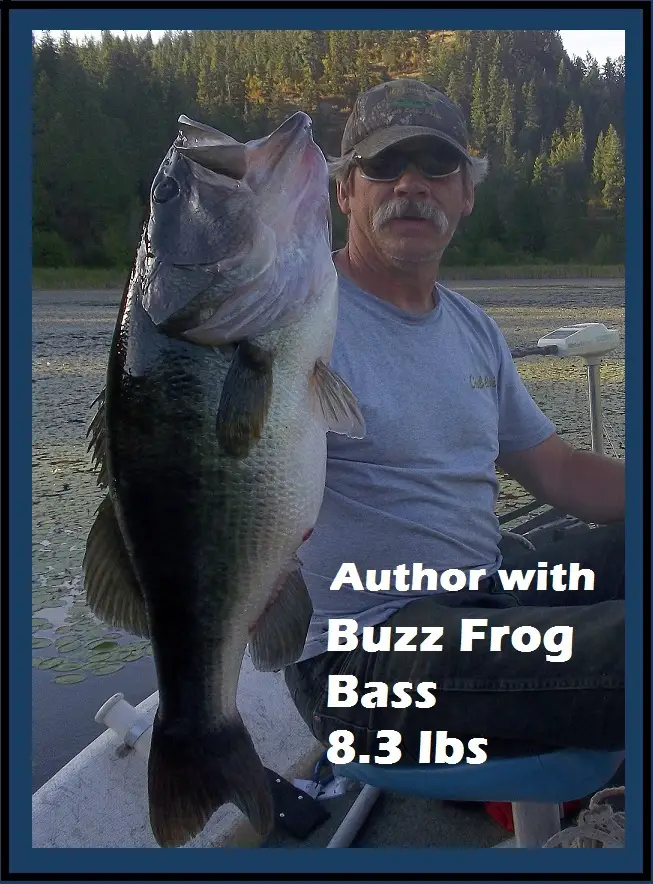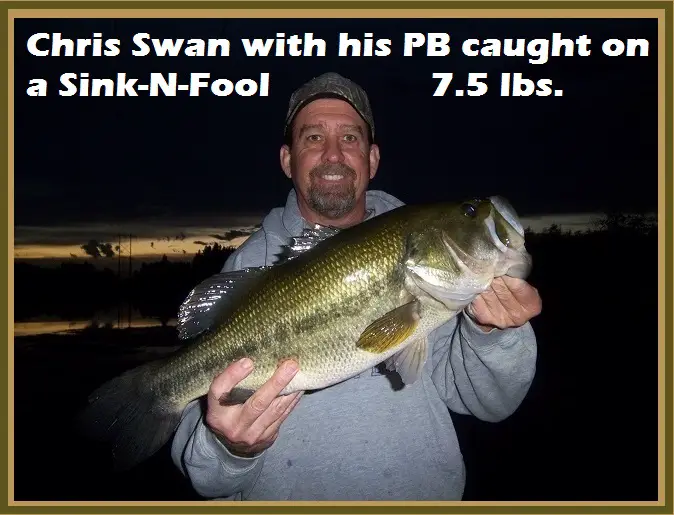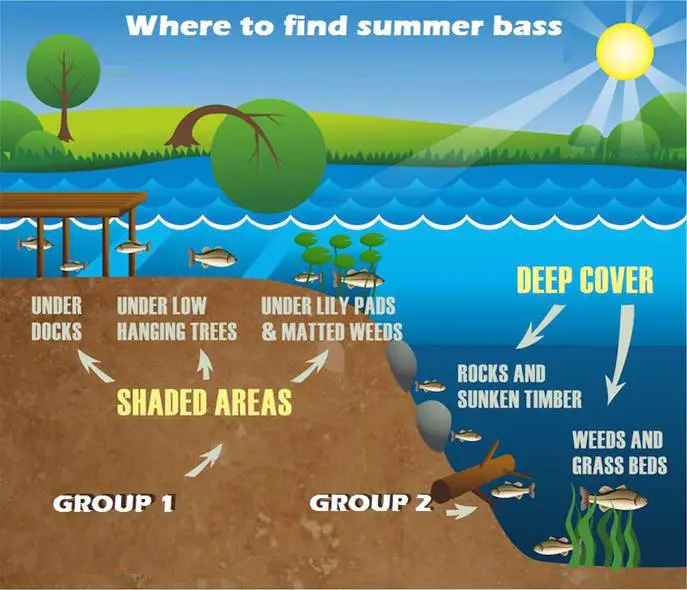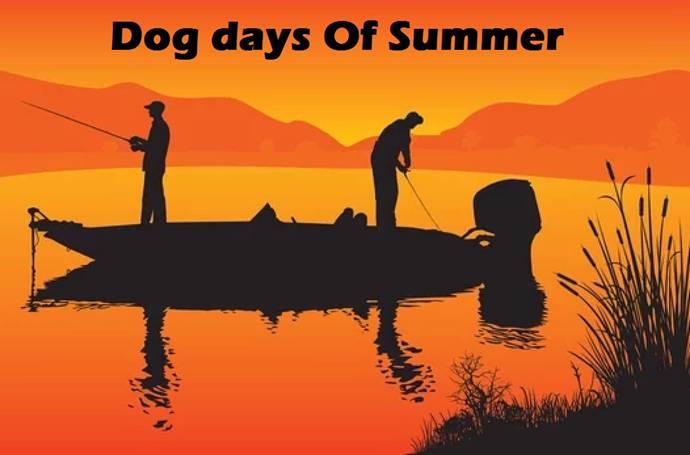Search
Latest Articles
My Top Five Summertime Bass Techniques
by Rick Lawrence, July 16, 2021
One thing you have to remember is after the spawn is over bass in most lakes will move off the beds and join 1 of 2 distinctly different groups. You have a group of fish that will stay shallow in the backs of the bays all summer long and they will key in on any heavy cover along the shore they can find. That may be down trees, stumps, overhanging grass, lily pads, docks or any number of other types of cover they can find that will give them protection from the sun and predators, but also provide cover to ambush prey. The majority of these fish are the males as they hang around longer then the big female to protect the fry in their nests. When they get done with that they will move to the first available good cover spot that is in less than 4 feet of water.
The other group is comprised mainly of the larger females. They will generally move out to the first good point in 8 to 12 feet of water they can find. They will still look for some kind of structure though, for protection from the sun and that will provide a good ambush point as well. This group of fish will be more scattered and harder to find then the shallow group most of the time. So without farther to-do here are my top 5 favorite summer bass techniques.
1. Early Morning Topwater
The span of time between dawn and 9am is primetime for topwater in the shallows and shorelines as well as from about 8 pm till dark and even up to an hour after dark, as even some of the big females will move in during these low light conditions to feed. There’s generally more food in the shallows, so when these areas aren’t getting bombarded by the sun bass move in to hunt. The low light conditions and calm water make it the optimal time for topwater lures.
This is when choppers, poppers, and walk-the-dog lures will get tons of action, but really all topwater baits are on the table at this point. One of my favorite lures is the Buzztoad like the Zoom Hornytoad. Running them tight to cover is ideal but during the early morning hours open water can also be as effective. Cast them as close to shore as possible and work them towards deeper water or parallel to the shoreline. My other favorite store bought bait is a plopper style bait. I make a couple topwater baits of my own design that are killer baits as well, one is a floating buzzbait and the other is a floating mouse bait that has a cool side to side action.
2. Sinking Stick Baits
Fishing deadstick type baits around heavy cover can be one of the most productive ways to catch summer bass. Heavy salt baits like The Sink-N-Fool that I invented are ideal to skip under docks or into heavy cover. They are lethal on summer bass in the shallows, as are some of the other sinking worm style baits. This kind of bait is a do nothing bait that you just cast it to what looks like a prime spot and let the bait fall on a semi slack line. This is a technique you really need to watch your line as it will move away from you rapidly about 6’ when a bass sucks in the bait and that’s your signal to set the hook. If you are fishing a hard bottom you can let the bait just sit on the bottom for up to a minute or so and the fish will come pick it up.
3. Banging Cover With Deep Diving Crankbaits
In lakes with deep water, bass will find protection from the sun and cooler water in the depths. This is when a fish finder is extremely useful for finding areas to target. You need to be able to see the bottom to know what the structure is like and where cover is located. Bass hold to deep structure and cover as a means to ambush prey, so running deep diving crankbaits through those areas can get a lot of bites. A good rule of thumb is to use a crankbait that will dive deep enough to hit bottom so if the water is say 8 to 9 feet deep use a DT10 or other bait that has a similar diving depth. I like to use baits that dive at least 2 feet deeper than the water you are fishing. If I’m fishing in water 15 to 18 feet I go with the Live Target deep craw. This is a amazing bait that unfortunately they don’t make anymore.
Unfortunately without electronics you’re fishing somewhat blind in deeper waters, but you can still make a good estimate on where to cast by targeting the drop offs. Head from the shallows towards deeper water while watching the bottom, when the bottom disappears from view make casts out deep and use your crankbait to tell you how deep the water is. Start with a smaller lipped crankbait and keep increasing the size of the lip until the bait hits the bottom. If it’s a sandy, gravel or rock bottom then it’s a good technique to crash against it. If there’s grass or other weeds then you can revert back to the previous lip size and run the bait just above the bottom.
4. Throwing Blades
Spinnerbaits are a perfect search lure for bass. You can cover a lot of water to locate fish. They replicate baitfish swimming across the water while utilizing both vibration and flash to attract bass from a distance. They come in a variety of designs, blades, body sizes, and allow for the use of trailers. This large versatility allows anglers to fish deep in the water column or right at the surface.
However, they are most popular as a shallow water lure, where they can be pulled through a variety of vegetation with success. Their loud and shiny presentation is especially enticing to bass that are opportunistic feeders. If fish aren’t biting or are short striking, a great technique can be to also add a flashy trailer with a trailer hook. Many times adding a trailer with a hook in it has upped my catch rate by 90%.
5. Punching Rigs
Punching is basically when you plunge a lure through the surface of heavy matted weeds to get to the fish hiding out below, a highly effective summer bass fishing tactic. Not only do the thick matted weeds provide a shield from the sun, they also oxygenate the water and hold plenty of food. They’re loaded with baitfish and crayfish that make ideal meals for a bass. Essentially all you’re doing is making the bait break through the surface weeds and sink quickly to the bottom. This is best done by flipping and pitching, a casting technique where you softly swing-cast lures at close targets. I like to use a Jika rig for this with a casting weight and either a creature bait or texas rigged worm on it. When a punch rig comes darting down through these thick weeded areas, bass in most cases take it for a baitfish heading for cover. This usually draws a reaction strike so be ready to set the hook. This technique takes some getting used to, so stick with it. Once you find success with it you’ll be hooked.



